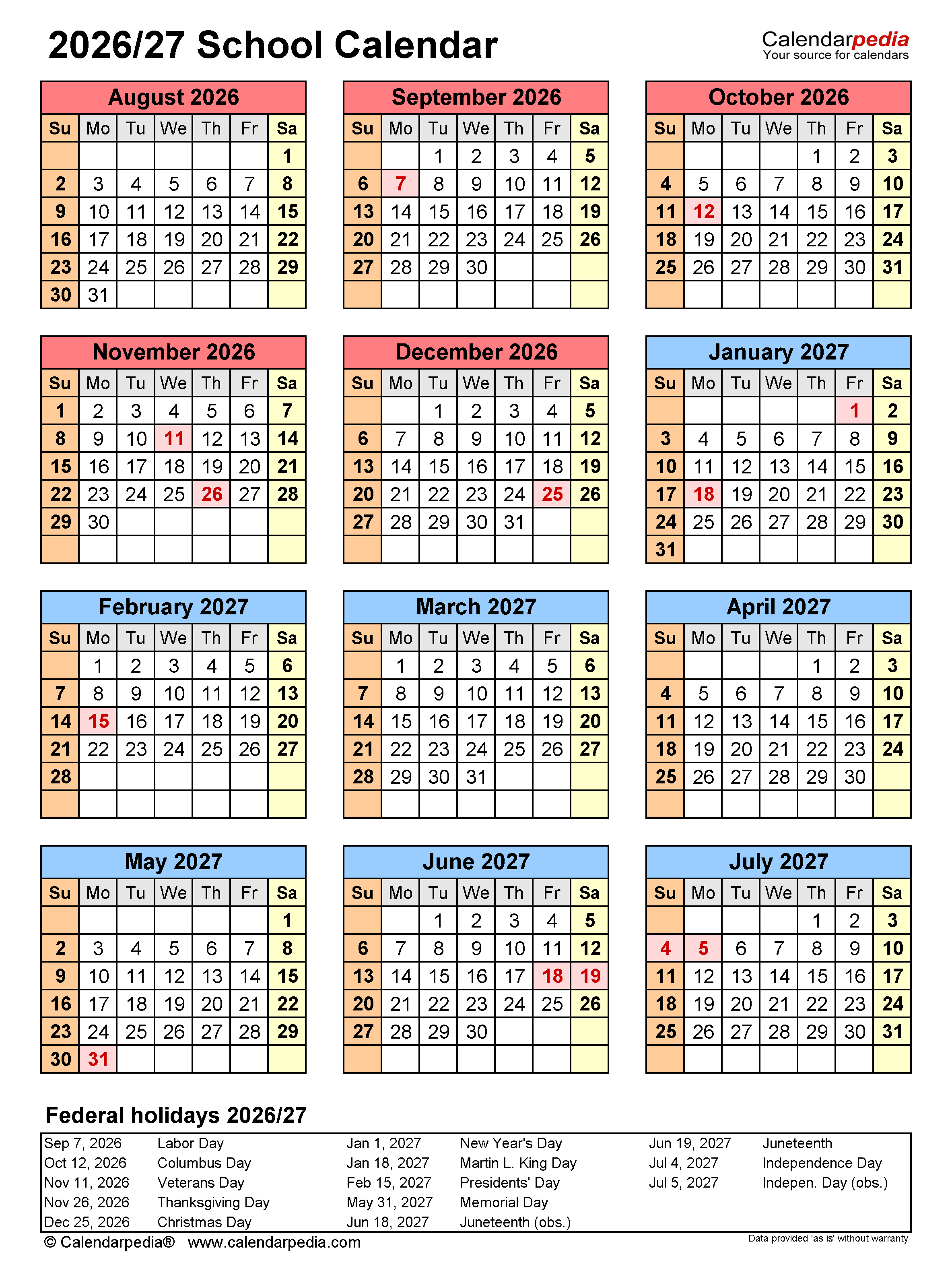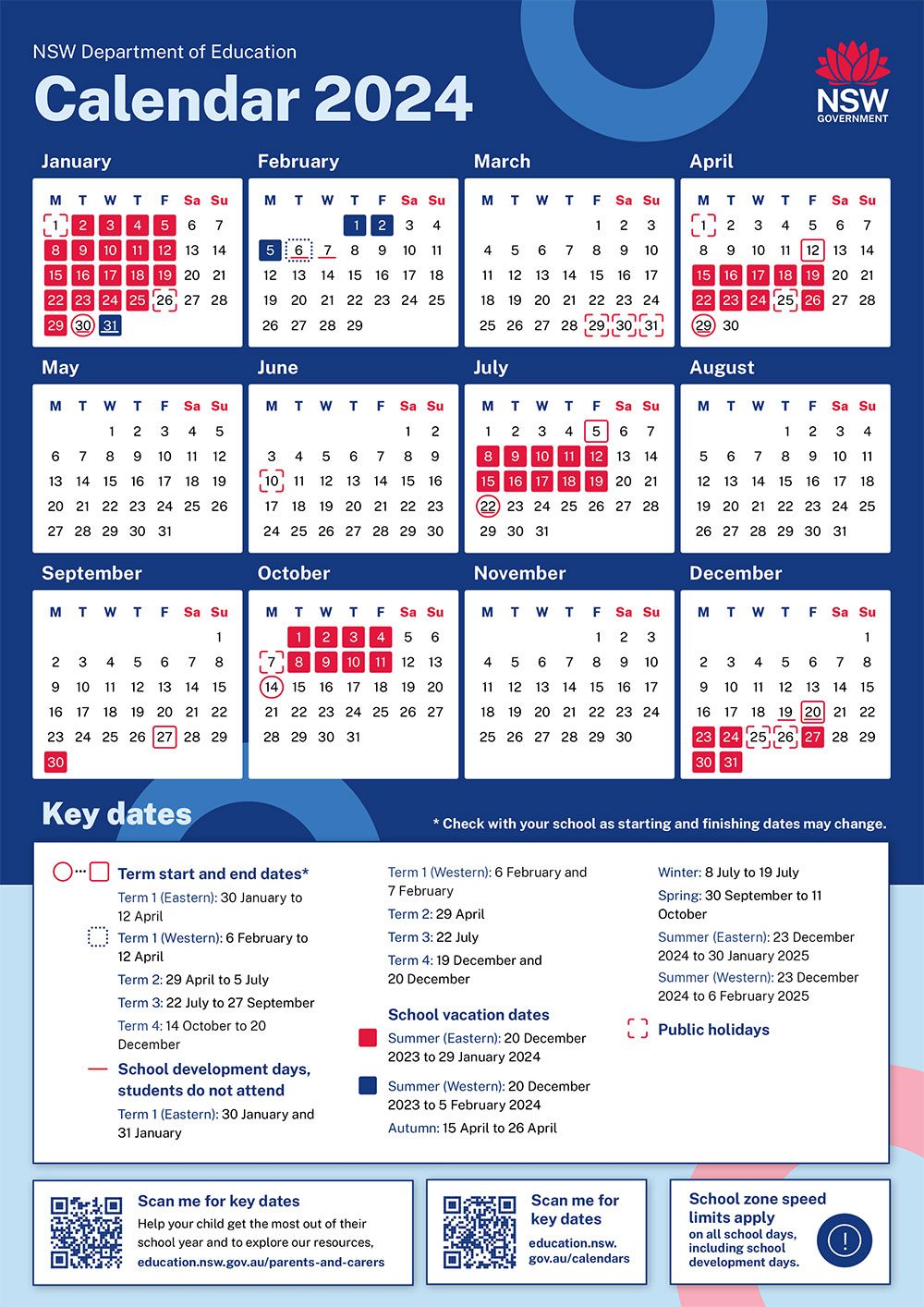
Introduction
The nsw school calendar 2026 represents a significant subject within its field, encompassing a range of practices, traditions, and applications that shape daily life and broader cultural or professional landscapes across New South Wales. For families, educators, and the wider community, understanding the nsw school calendar 2026 provides clarity about its background, its present relevance, and the way it continues to influence various aspects of society, from personal planning to economic activity. This detailed schedule dictates the rhythm of the academic year, impacting everything from student learning to parental work arrangements and the timing of community events.
Definition and Origin of nsw school calendar 2026
The school calendar for New South Wales in 2026, like those of previous years, is a meticulously structured timetable outlining the start and end dates for each school term, as well as designated holiday periods and public holidays. It applies to all government schools within the state, providing a consistent framework for education delivery. The primary purpose of this annual schedule is to ensure a standardized duration of instruction, facilitate coordinated planning across the educational system, and provide predictable breaks for students and staff.
The origin of a formal school calendar system in NSW dates back to the establishment of public education, evolving from more informal arrangements to a highly regulated structure. Historically, school terms were often influenced by agricultural cycles, allowing children to assist with harvests. Over time, as society industrialized and educational needs became more complex, a standardized calendar became essential. The modern framework is determined by the NSW Department of Education, taking into account statutory requirements for teaching days, public holidays, and the need for balanced term lengths. This ensures equity in educational provision and allows for statewide planning of curriculum delivery, professional development for teachers, and assessment schedules. The 2026 iteration continues this tradition, providing a clear roadmap for the academic year.
Importance of nsw school calendar 2026 Today
The contemporary significance of the nsw school calendar 2026 extends far beyond the classroom walls. For students, it provides the essential structure for their learning journey, allowing them to anticipate periods of intensive study, assessment, and much-needed rest. For parents and guardians, this schedule is a fundamental tool for family planning, enabling coordination of work schedules, childcare arrangements, and holiday bookings. The predictability offered by the academic year’s structure helps manage the complex demands of modern family life.
Educators and school administrators rely on the detailed calendar for operational efficiency. It guides curriculum planning, the scheduling of parent-teacher interviews, professional development days, and extracurricular activities. The consistent framework ensures that all schools operate on a similar timeline, facilitating statewide initiatives and resource allocation. Beyond the immediate educational sphere, the school year’s rhythm influences various sectors of the economy. Tourism and hospitality industries, for instance, often see peak demand during school holiday periods, while retail sectors adjust their marketing and stock levels in anticipation of back-to-school periods. Understanding the key dates allows businesses to plan staffing and promotions effectively, highlighting the broad societal impact of the educational timetable.
Benefits of nsw school calendar 2026
The structured nature of the nsw school calendar 2026 offers numerous benefits to various stakeholders. Firstly, it provides predictability, which is crucial for reducing stress and enabling proactive planning for families and schools alike. Knowing the exact start and end dates of terms and holidays allows for efficient organization of personal and professional commitments.
Secondly, the calendar supports improved academic planning and outcomes. Teachers can design their year-long curriculum with clear milestones, ensuring adequate time for instruction, revision, and assessment. Students benefit from a consistent learning environment and predictable breaks that prevent burnout and allow for rejuvenation.
Thirdly, it contributes to better work-life balance for parents and educators. Defined holiday periods offer opportunities for family time, travel, and personal pursuits, which are vital for well-being. This structure also aids in the coordination of childcare services, extracurricular activities, and community events, which often align with school holidays.
Furthermore, the economic benefits are notable. The predictable flow of school terms and holidays creates distinct periods of consumer activity. Travel and accommodation providers, entertainment venues, and retail businesses can anticipate demand and tailor their services accordingly, contributing to economic stability and growth within the state. The clear framework of the academic year ensures that the educational system operates smoothly, providing a stable foundation for the development of future generations.
Applications of nsw school calendar 2026
The practical applications of the nsw school calendar 2026 are diverse and touch upon numerous aspects of daily life and institutional operations. At a personal level, families use the calendar to schedule vacations, plan family gatherings, and coordinate childcare, particularly during school holidays. Parents often align their annual leave with these periods to maximize family time.
For educational institutions, the calendar is the backbone of their operational planning. School principals and administrative staff use it to schedule staff meetings, professional development days, school assemblies, sports carnivals, and cultural events. Teachers refer to it constantly for lesson planning, setting assignment deadlines, and preparing for examinations.
Beyond the school gates, community organizations frequently consult the academic year’s schedule when planning events aimed at children and families, such as holiday programs, youth sports leagues, and public library activities. Local councils might also consider school holidays when scheduling roadworks or public facility maintenance to minimize disruption.
The business sector also leverages this information. Travel agencies and airlines adjust their pricing and capacity based on peak school holiday demand. Retailers plan their seasonal sales, particularly for school supplies and holiday-related merchandise. Childcare providers, tutors, and extracurricular activity organizers structure their programs to complement the school terms and holiday breaks. Thus, the academic schedule serves as a vital planning tool across a wide spectrum of society, ensuring coordination and efficiency.
Challenges and Future of nsw school calendar 2026
While the nsw school calendar 2026 provides essential structure, it is not without its challenges, and its future may see adaptations to meet evolving needs. One ongoing challenge involves managing the impact of public holidays, which can sometimes fall awkwardly within school terms, leading to fragmented weeks and potential disruption to learning continuity. Unexpected events, such as natural disasters or public health crises, can also necessitate unforeseen adjustments to the schedule, requiring flexibility from all stakeholders.
Another area of discussion often revolves around balancing academic rigor with student well-being. There are periodic debates about the optimal length of terms and holidays, with some advocating for shorter, more frequent breaks or even year-round schooling models to prevent learning loss and reduce student fatigue. However, any significant alteration to the traditional four-term structure would have profound implications for families, teachers, and the broader economy, requiring extensive consultation and careful consideration.
The future of the academic schedule in NSW may also see increased integration of digital tools for personalized calendar management and real-time updates. There could be a growing emphasis on flexibility to accommodate diverse learning pathways or individual student needs, although a core standardized calendar will likely remain. As educational philosophies evolve and societal demands shift, the framework for the academic year will continue to be a subject of review and refinement, aiming to best serve the interests of students, educators, and the community.
FAQs about nsw school calendar 2026
Q1: What is nsw school calendar 2026?
A1: The nsw school calendar 2026 is the official schedule for government schools in New South Wales, outlining the start and end dates for each of the four school terms, as well as designated holiday periods and public holidays for the year 2026. It provides a standardized timetable for the academic year.
Q2: Why is nsw school calendar 2026 important?
A2: This calendar is important because it provides a consistent framework for education, enabling students, parents, and teachers to plan effectively. It ensures standardized instruction periods, facilitates family planning, aids school administration, and influences various economic sectors such as tourism and retail.
Q3: What are the main benefits of nsw school calendar 2026?
A3: The main benefits include enhanced predictability for planning, improved academic scheduling and outcomes, better work-life balance for families and educators, and positive economic impacts through coordinated consumer activity during holiday periods. It creates a stable and organized educational environment.
Q4: How can nsw school calendar 2026 be applied in daily life?
A4: In daily life, the calendar is used by families for planning vacations, childcare, and personal appointments. Schools apply it for curriculum delivery, event scheduling, and professional development. Businesses use it to anticipate demand for services like travel, retail, and childcare, aligning their operations accordingly.
Q5: What challenges are associated with nsw school calendar 2026?
A5: Challenges include managing disruptions from public holidays or unforeseen events like natural disasters. There are also ongoing discussions about optimizing term lengths and holiday periods to balance academic demands with student well-being, and adapting to future educational trends.
Tips for nsw school calendar 2026
-
Understand the fundamentals. Familiarize oneself with the basic structure of the academic year, including the four terms and their approximate durations, as well as the standard holiday periods. Knowing these core components allows for foundational planning. Regularly check the official NSW Department of Education website for the precise dates, as these are the authoritative source for the schedule.
-
Focus on practical use. Integrate the key dates from the school year into personal and professional planning tools. This could involve adding term dates and holidays to a digital calendar, a family planner, or a work schedule. Proactive planning for childcare, family vacations, and appointments around the academic timetable can significantly reduce stress and improve efficiency.
-
Stay updated on new trends or research. While the core structure of the school year remains consistent, there can be minor adjustments or discussions about future educational models. Keeping informed about any proposed changes or new research regarding academic scheduling can provide insight into potential long-term shifts. This might involve following educational news or official announcements from the Department of Education.
-
Avoid common mistakes. A frequent error is assuming that all schools follow the exact same holiday schedule, especially when comparing government and independent schools. Always verify the specific dates for the relevant educational institution. Another mistake is failing to account for pupil-free days, which are often used for teacher professional development and mean students do not attend school.
-
Adopt a long-term approach. While immediate planning is essential, consider the school year’s rhythm in a broader context. For instance, when planning major family events or career development opportunities, factor in the academic calendar for future years where possible. This foresight ensures that significant commitments do not conflict with critical school periods or family holiday times, promoting better overall life management.
Conclusion about nsw school calendar 2026
The nsw school calendar 2026 serves as an indispensable framework, orchestrating the educational journey for hundreds of thousands of students and providing vital structure for families and the wider community across New South Wales. Its continuing importance cannot be overstated, reinforcing its cultural, professional, and personal significance. This meticulously planned schedule underpins the smooth operation of the state’s education system, facilitating learning, fostering well-being, and enabling broader societal coordination. While challenges exist, particularly in adapting to evolving needs and managing unforeseen disruptions, the inherent benefits of a clear, predictable academic timetable far outweigh them. The school year’s structure ensures consistency, promotes effective planning, and contributes to the economic and social fabric of the state, guaranteeing that the nsw school calendar 2026 remains a central element of progress and relevance into the future.







Leave a Reply